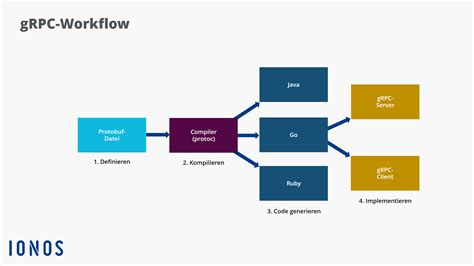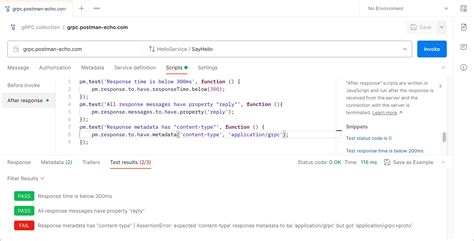In today's fast-paced digital era, the demand for efficient and seamless communication between software systems is paramount. The world of iOS development is no exception, as it constantly seeks cutting-edge technologies to enhance the performance and reliability of mobile applications. One such groundbreaking technology revolutionizing the iOS landscape is the implementation of gRPC.
gRPC represents a high-performance, open-source framework that facilitates efficient communication between different software systems. Prominent for its simplicity, speed, and cross-platform compatibility, gRPC empowers developers to build robust and scalable applications. With the growing complexity of modern iOS applications, harnessing the potential of gRPC can significantly streamline data transmission and pave the way for more responsive and dynamic mobile experiences.
Embracing gRPC in iOS development offers a myriad of advantages, enabling seamless coordination between client and server applications, improved latency, and reduced network usage. This powerful framework leverages the HTTP/2 protocol to provide efficient and bi-directional communication, making it an ideal choice for resource-constrained environments. Whether you're developing a real-time messaging app, a data-intensive business application, or a distributed system, gRPC provides the perfect solution to optimize network performance and elevate the user experience.
However, implementing gRPC in iOS applications requires a thorough understanding of its core concepts, architectural paradigms, and integration techniques. This comprehensive guide aims to equip iOS developers with all the essential knowledge and practical insights needed to harness the full potential of gRPC. From exploring the underlying principles to diving into hands-on examples, this article will provide a step-by-step walkthrough of leveraging gRPC in iOS development.
What is gRPC?
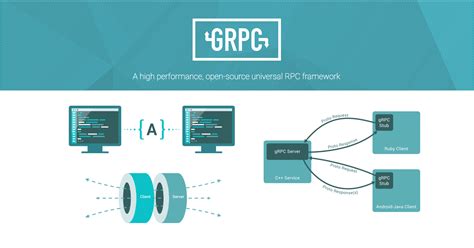
Discovering the power and potential of gRPC unlocks a realm of possibilities for application development on mobile platforms. This section delves into the fundamental concepts and principles behind gRPC, providing a comprehensive understanding of its significance.
At its core, gRPC is a high-performance, open-source remote procedure call (RPC) framework. It enables seamless communication between different services across various platforms, facilitating efficient data exchange and interaction. By leveraging the power of protobuf (Protocol Buffers), gRPC allows for the definition of service interfaces and message types in a platform-independent manner, ensuring compatibility and flexibility.
With gRPC, developers can design efficient and reliable communication protocols for distributed systems. The framework facilitates the development of client-server applications, allowing entities on different devices or platforms to communicate seamlessly. This enables the creation of scalable and synchronized systems that can handle complex interactions with ease.
Moreover, gRPC supports a range of programming languages, including but not limited to Java, C++, Python, and Go. This flexibility allows developers to utilize their preferred language and leverage existing codebases during the integration process. By promoting interoperability and ease of integration, gRPC becomes an attractive choice for cross-platform application development.
Overall, understanding the essence of gRPC provides a foundation for exploring its practical implementation in iOS applications. By harnessing the power of this RPC framework, developers can create robust, efficient, and modern applications that can seamlessly communicate with services across networks and platforms.
Benefits of incorporating gRPC in iOS development
When developing iOS applications, it is crucial to choose the right tools and technologies that can enhance the performance and efficiency of your app. One such technology is gRPC, a high-performance open-source framework designed to facilitate communication between client and server applications over different platforms and programming languages.
Integrating gRPC into iOS applications brings numerous advantages that can significantly improve the overall user experience and streamline the development process. Firstly, gRPC offers enhanced performance compared to traditional communication protocols like REST due to its efficient binary serialization format and the use of HTTP/2 for transporting messages. This results in faster data transfers and reduced network latency, optimizing the responsiveness of your iOS app.
Another notable benefit of using gRPC in iOS development is its support for bidirectional streaming. This means that both the server and the client can send multiple requests and responses asynchronously, enabling real-time updates and continuous communication between the app and the server. This is especially useful for applications that require constant data synchronization, such as chat applications or collaborative tools.
In addition to performance improvements and bidirectional streaming, gRPC also offers automatic code generation. By defining protocols and service interfaces using Protocol Buffers, developers can automatically generate client-side and server-side code, saving time and effort in writing boilerplate code for network communication. This improves code maintainability and reduces the risk of human error, resulting in a more robust and reliable iOS app.
Furthermore, gRPC supports language-independent APIs, allowing communication between different programming languages and platforms. This means that if you have backend services implemented in other languages, such as Go or Python, you can easily integrate them into your iOS app using gRPC without the hassle of developing custom communication protocols or dealing with language-specific serialization issues.
In summary, utilizing gRPC in iOS applications can enhance performance, enable real-time communication, automate code generation, and ensure compatibility with different programming languages. By leveraging these benefits, developers can create efficient, responsive, and scalable iOS apps that offer a seamless user experience.
Understanding the Inner Workings of gRPC
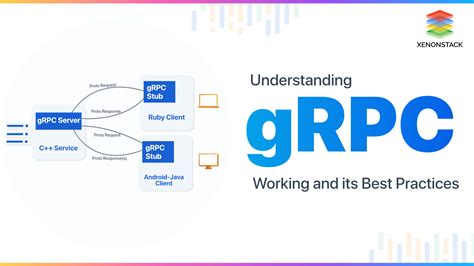
In this section, we will delve into the intriguing mechanics behind the gRPC framework. By gaining an understanding of how gRPC operates, we can comprehend its functionality and grasp its impact on iOS applications.
At its core, gRPC is a remote procedure call framework that allows diverse applications to communicate with one another seamlessly. Instead of relying on traditional APIs or custom protocols, gRPC leverages the power of Protocol Buffers to enable efficient communication between different systems.
When an iOS application interacts with a gRPC-based service, a specific process is set in motion. First, the application establishes a connection with the remote server by initiating a network request. This request contains the desired method and necessary parameters that the server will process.
Upon receiving the request, the gRPC framework springs into action. It serializes the parameters using Protocol Buffers, compresses the data if necessary, and transmits it to the server. The server, in turn, decompresses and deserializes the information, allowing it to process the requested method with the included parameters.
Once the server completes its processing, it formulates a response containing the necessary data. The response goes through a similar process - serialization, potential compression, and transmission - before reaching the iOS application. Here, the received data is deserialized and processed by the application to produce the desired outcome.
One of the key characteristics of gRPC is its support for bidirectional streaming, enabling real-time communication between the server and the client. This mechanism facilitates efficient data exchange, making gRPC an ideal choice for scenarios where constant interaction is required.
Overall, understanding the inner workings of gRPC provides developers with valuable insights into its capabilities and how it can enhance the communication between iOS applications and remote servers.
Getting Started with gRPC in iOS Applications
Embarking on the journey of incorporating gRPC into iOS applications can be an exciting endeavor. This section provides an overview of the key steps required to begin utilizing gRPC in your iOS development projects without overwhelming technical jargon.
To start integrating gRPC into your iOS applications, it's important to first understand the fundamentals. This involves grasping the concept of remote procedure calls (RPCs) and how they facilitate communication between different computing systems.
Once you have a solid understanding of RPCs, the next step is to familiarize yourself with the capabilities and benefits of gRPC. Developed by Google, gRPC is an efficient open-source framework for building high-performance, language-agnostic RPCs.
In order to get started with gRPC in iOS applications, you'll need to set up the necessary tools and dependencies. This includes installing the required software development kits (SDKs) and packages, such as Protocol Buffers. Protocol Buffers are a language-agnostic mechanism for serializing structured data, and they are an integral part of gRPC.
After setting up the necessary tools, it's time to write the gRPC code in your iOS application. This involves defining the service interface using Protocol Buffers, generating the client-side stub code, and implementing the necessary server-side logic.
Once the code is written, you can then build and integrate the gRPC functionality into your iOS application. This may involve configuring network settings, handling authentication and authorization, and implementing error handling mechanisms.
Finally, it's crucial to thoroughly test and debug your gRPC implementation in iOS applications. This ensures that the communication between client and server is functioning correctly and that any potential issues or bottlenecks are identified and addressed early on.
By following these steps, you can confidently incorporate gRPC into your iOS applications and take advantage of its performance, efficiency, and scalability in facilitating seamless communication between different parts of your application ecosystem.
Best practices for leveraging gRPC in iOS apps: Optimal strategies for seamless integration
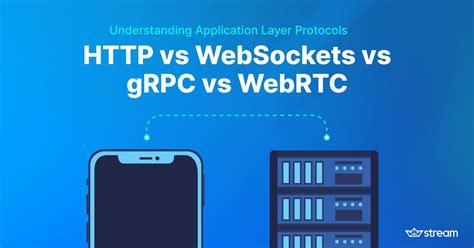
When it comes to integrating gRPC into your iOS applications, employing the best practices ensures smooth and efficient communication between your app and backend services. In this section, we will explore some proven strategies that will help you maximize the potential of gRPC in your iOS applications, enabling you to deliver a seamless user experience.
1. Protocol Buffer Design: An effective gRPC implementation starts with a well-thought-out design of your protocol buffers. Take the time to carefully define your services, message types, and APIs to ensure clarity, maintainability, and extensibility. It is crucial to consider future updates and potential changes when designing your protocol buffer schemas.
2. Optimizing Data Transfers: Efficient data transfer is essential for the performance of your iOS app. Consider using streaming RPCs for scenarios that involve ongoing data exchange, reducing the overhead of establishing new connections. Additionally, employ compression techniques such as gzip to minimize the network payload and improve overall performance.
3. Error Handling and Resilience: A robust error handling mechanism is vital to handle unexpected scenarios effectively. Define clear error codes and messages in your protocol buffers, enabling efficient error identification and resolution. Implement retry and circuit breaker patterns to handle intermittent connectivity issues and improve your app's resilience.
4. Securing Communication: Protecting data during communication is a top priority. Utilize SSL/TLS encryption to secure the transport layer and authenticate both the client and server. Explore authentication mechanisms such as OAuth or JWT for secure client-server interactions, ensuring data confidentiality and integrity.
5. Performance Monitoring: Proactively monitor the performance of your gRPC implementation to identify bottlenecks and optimize resource utilization. Utilize tools like trace, debug, and profiling to gain insights into the communication process and fine-tune your app accordingly. Regularly analyze logs and metrics to identify potential issues and implement necessary optimizations.
By following these best practices, you can harness the power of gRPC in iOS applications effectively. Seamlessly integrating gRPC with your app not only improves communication with backend services but also enhances user experience, making your app a formidable player in the iOS ecosystem.
FAQ
What is gRPC and how does it work?
gRPC is an open-source remote procedure call (RPC) framework developed by Google. It allows different applications and services to communicate with each other efficiently and easily by defining a service contract using Protocol Buffers. gRPC uses HTTP/2 as the underlying protocol, which offers advantages such as multiplexing, streaming, and header compression.
Why would I use gRPC in my iOS application?
There are several benefits of using gRPC in iOS applications. First, gRPC offers a more efficient and lightweight communication mechanism compared to traditional REST APIs. It also provides built-in support for bi-directional streaming and server-side streaming, making it well-suited for real-time applications. Additionally, gRPC generates client SDKs for multiple programming languages, including Swift, which makes it easier to integrate with iOS applications.
How can I integrate gRPC into my iOS application?
To integrate gRPC into an iOS application, you need to follow several steps. First, you need to define your service contract using Protocol Buffers. Then, you can use the gRPC Swift library to generate client code based on your service definition. Once you have the generated client code, you can use it to make RPC calls to the server and handle the responses. Finally, you need to configure the necessary dependencies and build settings in your Xcode project.
Can I use gRPC with both Objective-C and Swift in my iOS application?
Yes, you can use gRPC with both Objective-C and Swift in your iOS application. While gRPC Swift provides a more modern and convenient way of working with gRPC in Swift, it also offers support for generating Objective-C code from your service definition. This allows you to use gRPC in both new and existing iOS applications written in either language.
Are there any alternatives to gRPC for building iOS applications?
Yes, there are alternative options to gRPC for building iOS applications. One popular alternative is Alamofire, which is a widely used networking library in the iOS community. Alamofire provides a simpler and more traditional approach to networking compared to gRPC, but it may not offer the same level of efficiency and real-time capabilities. The choice between gRPC and alternatives depends on the specific requirements of your application.
What is gRPC?
gRPC is an open-source remote procedure call (RPC) framework developed by Google. It allows clients and servers to communicate transparently over any network and programming language. It uses Protocol Buffers as the interface definition language and supports multiple programming languages. gRPC offers high-performance, cross-platform communication that is efficient, scalable, and reliable.


